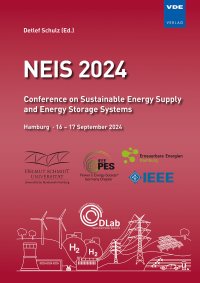Hierarchical Energy Management for the Multi-Use-Application of a PV Park with hybridized Large-scale Battery Storage and Power-to-Gas plant in the MW range
Konferenz: NEIS 2024 - Conference on Sustainable Energy Supply and Energy Storage Systems
16.09.2024-17.09.2024 in Hamburg, Germany
doi:10.30420/566464023
Tagungsband: NEIS 2024
Seiten: 6Sprache: EnglischTyp: PDF
Autoren:
Biermann, Tim; Bocklisch, Thilo
Inhalt:
Battery storage systems and power-to-gas plants are both key technologies driving the transition towards the sustainable energy system of tomorrow. Combining these key technologies into a hybrid energy storage system offers both technical and economic benefits. Suitable multi-use applications consisting of: peak shaving, capacity firming, spot market trading and the continuous hydrogen production through the optimized operation of the power-to-gas plant, are proposed to utilize the operational flexibility of this multi-storage configuration and demonstrated with a PV park. The energy storage systems are modelled and simulated on plant level using experimentally validated real-world data. A new hierarchical energy management concept with two management levels is presented. On the upper-level energy management, a model predictive controller with two related spot market optimizations formulated as mixed-integer linear program is used to determine the grid power considering the short-term overload potential of the power-to-gas plant and the ageing-aware operation of both the large-scale battery storage and the power-to-gas plant. For the large-scale battery storage, a non-linear semi-empirical ageing model is used. Degradation cost functions are derived that are piecewise-linearized for the use in the optimization problems. On the lower-level energy management an adaptive strategy-based power allocation is used so that the committed grid power can be assured despite of model and forecast errors in the upper-level energy management. Simultaneously the dynamic stress of the large-scale battery storage and the power-to-gas plant are reduced through an adaptation of the power split. To illustrate how the developed energy management works, a summer day with negative electricity prices is simulated. It is demonstrated that the economic curtailment of PV power and trading on and between the spot markets enables profit maximization while ensuring the frequent utilization of the overload range of the continuously operated power-to-gas plant and grid-friendly capacity firming of the PV park.


